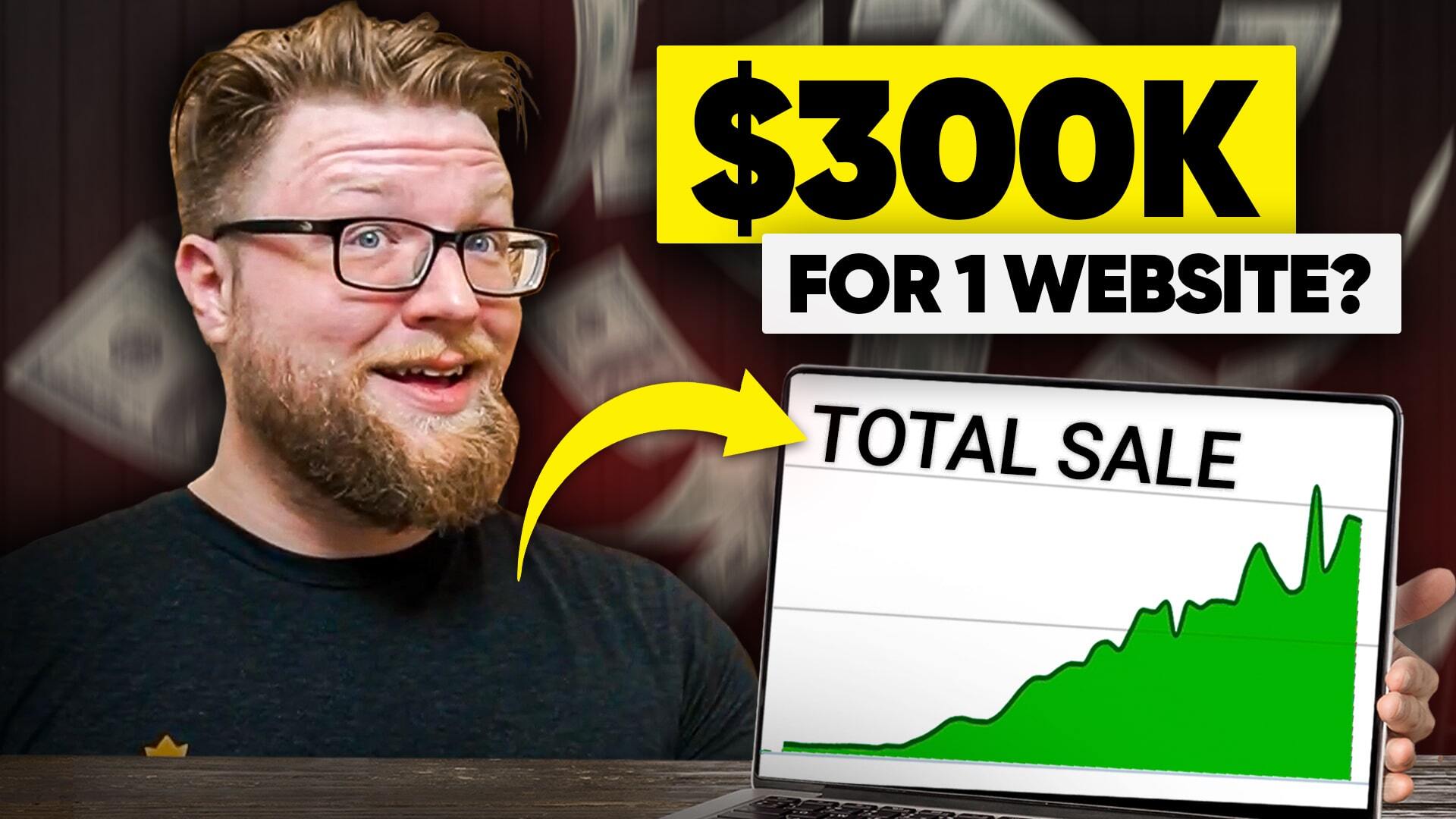This Week in M&A Issue #193
Hello there! 👋
Today’s trend of the week is “backyard barbecue”.
Summer’s heating up, and so is the backyard barbecue boom, opening up mouthwatering opportunities for online entrepreneurs.
According to Shopify data shared with Retail Brew, sales of outdoor grill toppers are up 109%, while grill presses jumped 47%, reflecting a surge in consumer demand for grilling gear. In the U.S., grill ownership has soared from 64% in 2019 to 80% in 2023, with 63% of users firing them up all year long, even in winter. With the U.S. grill market projected to grow from $3.35 billion in 2024 to $4.81 billion by 2030, the market is heating up faster than a charcoal grill in July.
Ecommerce brands can cash in by selling grill accessories, gourmet rubs, sauces, and outdoor cooking equipment. SaaS builders can create apps for grill management, smart cooking tools, or personalized recipe planning. And content creators can cash in on grill recipes, gear reviews and technique tutorials. Now is a great time to fire up your business and cash in on this trend.
Today we have for you:
- Instagram posts are now Google searchable
- Prime Day 2025 starts slow but aims for a record finish
And:
- The SaaS guide to building with purpose and exiting with pride
- Content sites are not dead yet
- YouTube tightens monetization rules to fight “AI slop”
Alright, let’s dive in.
Instagram Just Became an SEO Power Tool
Starting July 10, 2025, Instagram will begin allowing Google to index public content from professional accounts, giving business owners and creators a powerful new channel for organic discovery.
If you run a public business or creator account and are over 18, your Reels, photos, and videos could soon show up in Google search results, right alongside blog posts, product listings, and even competitor content.
This effectively turns Instagram from a closed platform into a searchable content hub, aligning it with platforms like YouTube and TikTok, which already dominate Google results. Without needing a website, your profile could act as your SEO-friendly storefront. Keyword-rich captions, alt text, and hashtags now carry weight beyond the app, helping you rank in Google searches.
Better yet, posts that once faded after a day or two can now resurface months later, thanks to search intent. This means that high-value content has a longer shelf life and a broader reach, without the need for paid ads.
But visibility comes with responsibility. Your content may live longer in Google’s memory than you intended, even if it’s deleted from Instagram. That makes auditing your past posts and fine-tuning your content strategy more important than ever. You’ll also need to track both Instagram engagement and search performance using tools like Instagram Insights and Google Search Console.
If you prefer to keep your content within the Instagram ecosystem, you can opt out anytime in Settings → Privacy by toggling off the search engine visibility feature. Personal or private accounts, as well as accounts of minors, are excluded from this new feature.
If you plan to embrace this update, now is the time to review your account settings, audit your past posts, and begin crafting a strategy that balances Instagram engagement with search visibility.
The Opportunity Podcast
Scale Your SaaS Without Selling Your Soul
What if scaling your SaaS didn’t require burning out or selling your soul to venture capital?
In this episode, Greg sits down with seasoned SaaS founder, author, and startup mentor Rob Walling to discuss what it really takes to build a sustainable, sellable SaaS business.
Rob shares how he stumbled into SaaS before it was cool, and how that journey led him to co-create TinySeed, an alternative funding model that puts founders first. He breaks down how TinySeed’s 12-month program works, who it’s for, and how it compares to traditional VC.
We also dive into the psychological shifts that come with selling your business, how to recognize the right time to exit, and how to protect your energy both before and after a sale.
Whether you’re bootstrapping, raising capital, or planning an exit, this episode is packed with honest, actionable insights that will help you scale smarter, and sell without regret.
Amazon
Prime Day 2025 Becomes a Crucial Test for Ecommerce
Amazon’s 2025 Prime Day isn’t just a shopping spree; it’s a stress test for the entire ecommerce industry in a volatile economic climate.
Now a four-day event running July 8–11, Adobe Analytics projected a massive $23.8 billion in U.S. online sales during the event, equivalent to two Black Friday 2024 events. BofA estimates Amazon could account for $21.4 billion in merchandise sold nationwide over the four-day period, marking a 60% year-over-year jump.
But early data paints a mixed picture. As of 4 p.m. on Day 1, the average order size dipped 1.7% from last year, while household spend dropped 3.6%, according to Numerator.
Adding fuel to the debate, Momentum Commerce reported a steep 41% decline in day-one sales compared to last year. Amazon strongly disputed the claim, calling it “highly inaccurate.” Momentum later clarified that despite the slower start, client sales were up 477% over a typical day, with engagement hitting record highs, likely due to shoppers waiting for bigger deals later in the event.
Industry experts argue that spreading Prime Day over four days is changing shopper behavior and cushioning the impact of inflation and tariff fears. Extending the deals gives customers more opportunity to front-load large purchases before new tariffs kick in.
Tariff fears are also changing seller behaviour, with some sellers holding onto pre-tariff inventory ‘like gold’ and offering fewer, more strategic discounts.
Amazon’s expansion of Prime Day shows confidence in its ability to deliver deals at scale, even in an unpredictable economy. Despite the slower start, the event is expected to break records and could mark a major shift in how online shopping adapts to global uncertainty.
Read All About It!
⚡️ 1,000+ AI marketing & productivity prompts: save valuable time
🎓 How to launch a 6-figure course in 15 steps: rules for a $100k+ course launch
🎤 Hubspot AI startup pitch competition: win $50K + more
🌍 Top 20 places to launch a startup: world’s leading startup ecosystems
YouTube
The Real Reason Content Sites Still Sell
Everyone’s saying it, content websites are dead. Sales are tanking, competition is cutthroat, and buyers are nowhere to be found.
But is that actually true?
In our latest YouTube video, Greg digs into 3 years of real sales data from our marketplace to find out what’s really happening in the world of content sites.
Spoiler: They’re not dead. But the game has changed.
If you’re thinking about buying, selling, or building a content site, you need to understand what makes these sites sellable today, because it’s not what worked three years ago.
Watch the video to find out where the industry is heading and how to stay ahead.
YouTube
YouTube Cracks Down on Low Effort AI Content
Starting July 15, 2025, YouTube is rolling out stricter rules on what qualifies for monetization, and if you run a channel, you’ll want to pay attention.
The platform is officially tightening its standards to combat the flood of low-effort, mass-produced content, especially videos churned out with AI tools. The goal is to reward originality and protect the monetization system for creators who actually put in the work.
The updated policy zeroes in on content that is repetitive, templated, or offers little unique value. This includes channels pumping out near-identical videos, synthetic voiceovers stitched together from recycled clips, or automated uploads made just to game the algorithm. YouTube says these uploads may not have broken past rules, but they dilute viewer experience and devalue the ecosystem.
But before you panic, especially if you’re using AI in your workflow, know this: YouTube isn’t banning AI-generated content. If your videos meet quality standards and offer something original or insightful, you’re still in the clear. Tools that enhance production, automate editing, or assist in scripting are fine, as long as your content delivers real value.
This move targets what many call “AI slop”: mindless, spammy uploads that flood feeds without offering anything new. YouTube wants to draw a clearer line between innovative use of AI and lazy content farming.
The full policy language hasn’t been released yet, but the direction is clear: creators need to offer real value, not just volume. For those building businesses on YouTube, this is a reminder to stay focused on quality. AI can be part of your workflow, but it shouldn’t replace your creativity.
Subscribe to the This Week in M&A Newsletter
to Get Content like This in Your Inbox Every Friday




![The SaaS Guide to Building with Purpose and Exiting with Pride with Rob Walling [Ep.182]-min](https://1745913.fs1.hubspotusercontent-na1.net/hubfs/1745913/The%20SaaS%20Guide%20to%20Building%20with%20Purpose%20and%20Exiting%20with%20Pride%20with%20Rob%20Walling%20%5BEp.182%5D-min.png)

